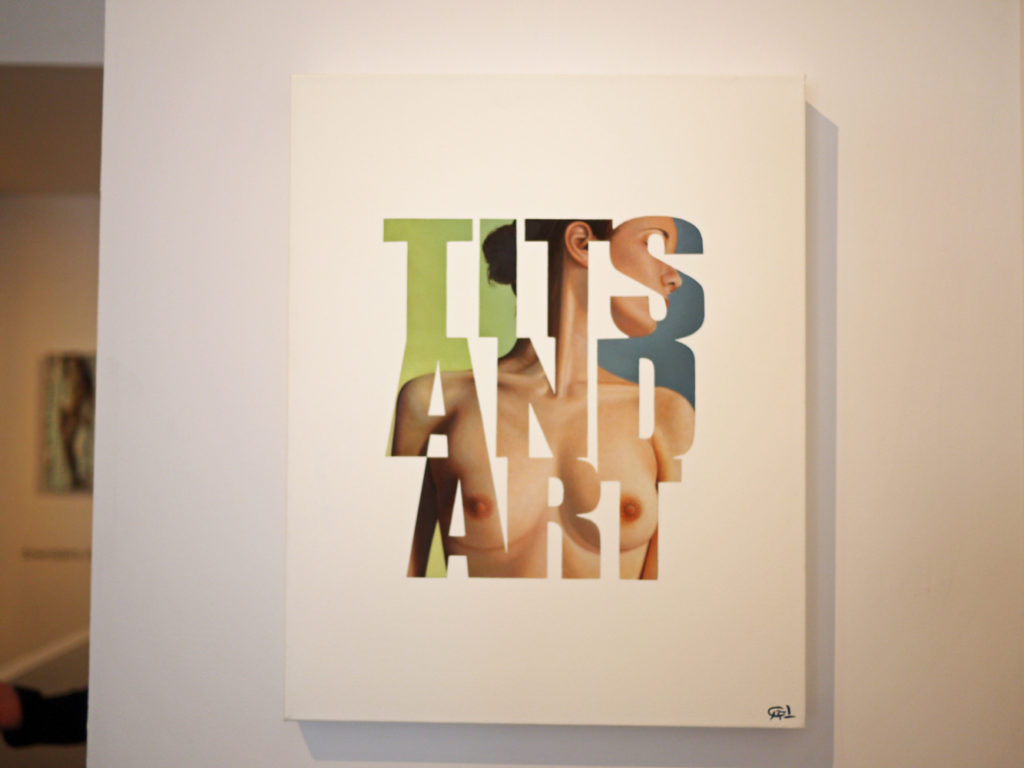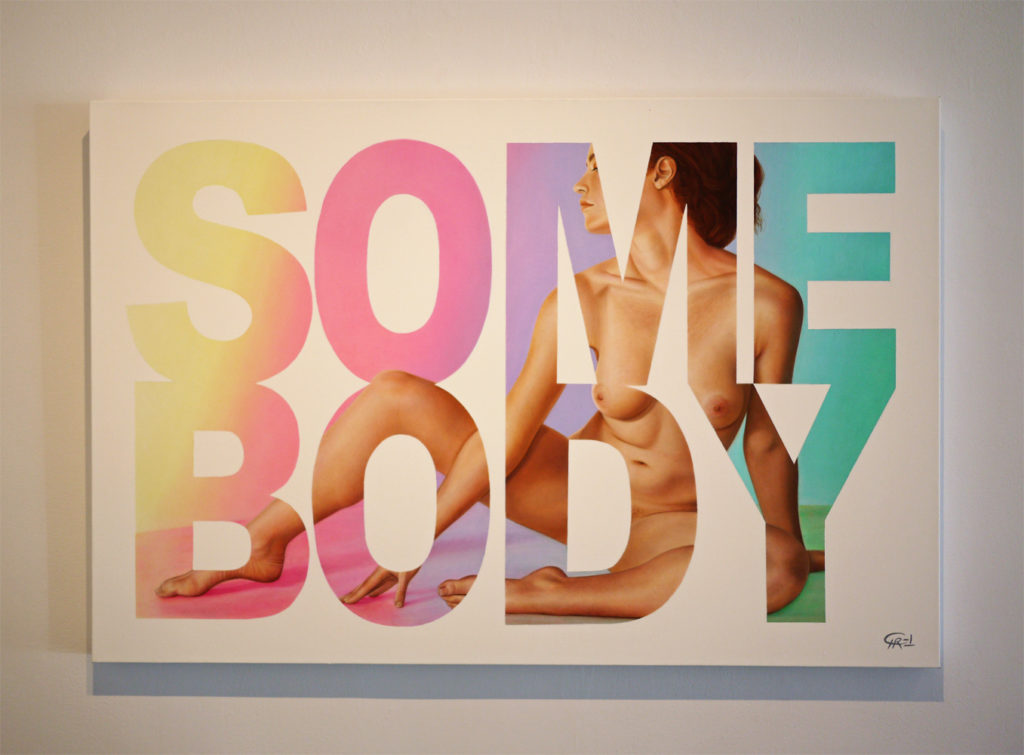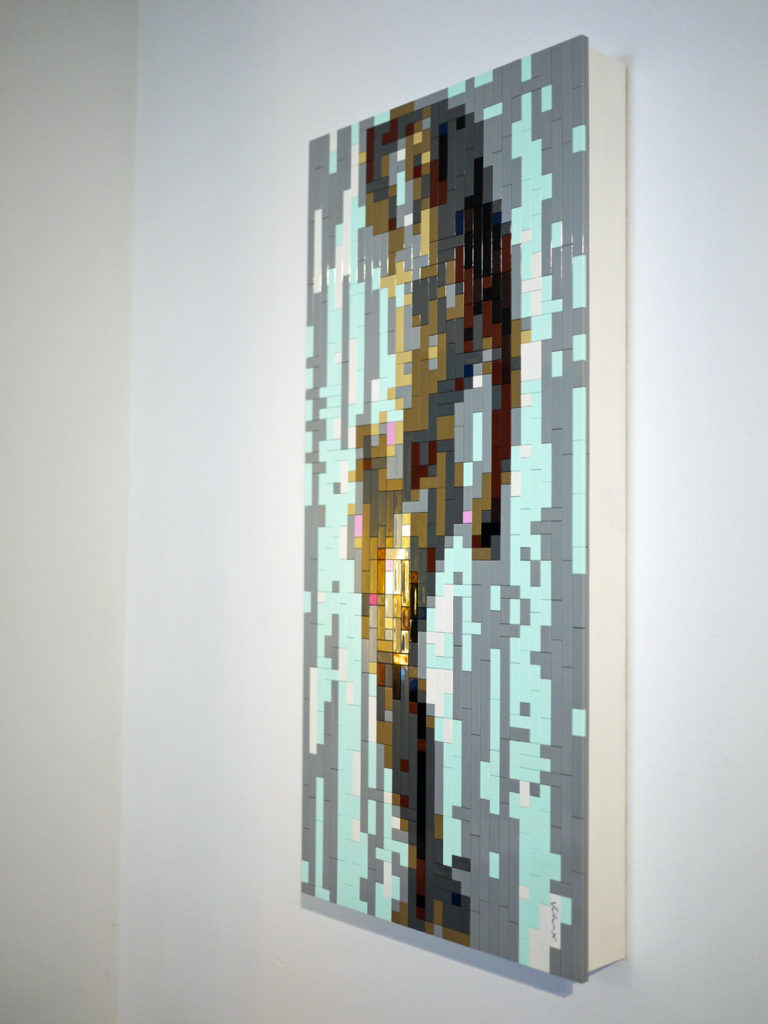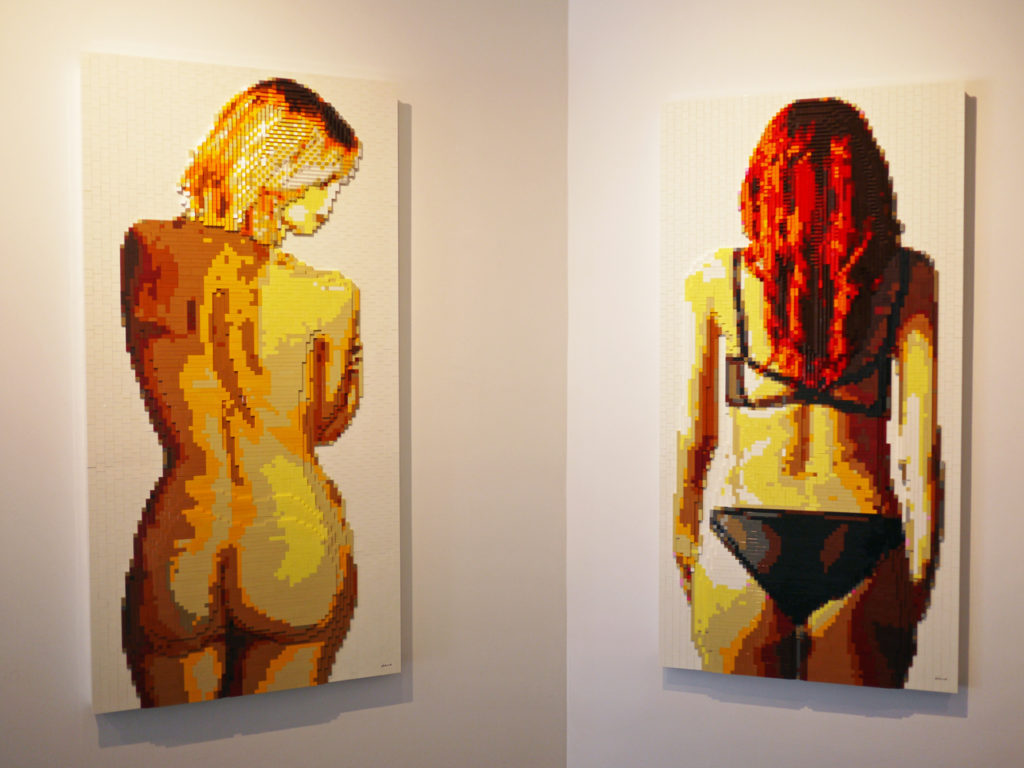Through their joint exhibition ‘Deluxe’, contemporary artists Bri Cirel and Andre Veloux examine how gender influences perception and creates bias standards in art, media, and life. On view at Krause Gallery in the Lower East Side through November 14th, the show features a series of recent works by each artist, addressing feminist themes through radically different mediums. Cirel’s oil paintings focus on the portrayal of female bodies, while Veloux’s three-dimensional LEGO “anti-portraits” challenge traditional gender representation.
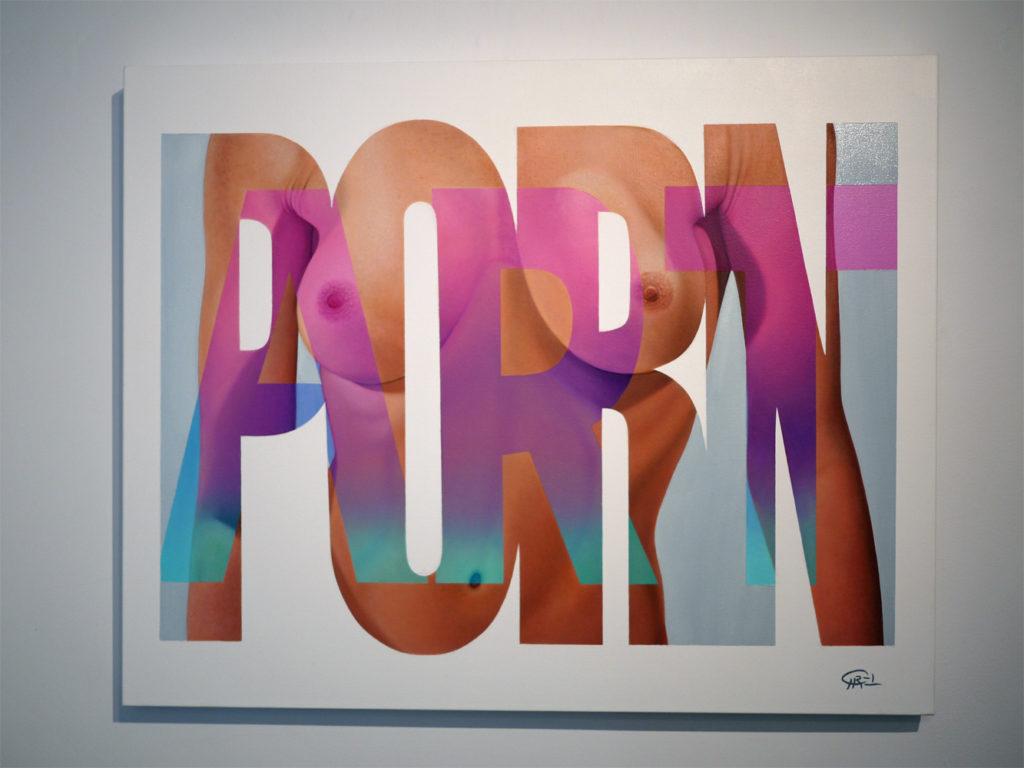
You each work with drastically different mediums but find common ground in your subject matter. What compelled the two of you to collaborate on an exhibition?
Bri: I was drawn to Andre’s work initially because of the strong feminine imagery and how he creates pixelation and dimension using such an unconventional medium. Once I found out more about the messaging behind the works I felt connected to his concepts because they are feminist and address images of women in art and media much like my own work. When the chance to collaborate developed it felt like a great opportunity to form a theme and showcase our ideas about gender politics in a way that supports each other and ultimately goes more in-depth than either of us could go alone.
Andre: Around the turn of the year I was talking with the gallery about a joint show and had seen Bri was already making an impact with her work in the twice yearly group shows. We had already been talking about our shared values, common themes and artistic vision, and that it was great we were showing at the same New York Gallery, because we had previously both shown at Parlor Gallery in Asbury Park. I was excited by the potential of collaborating with Bri.
At what point in your life did each of you realize you wanted to focus your artistic practice on feminism & women’s issues? What factors influenced that decision?
Bri: Having studied art history and being a female artist myself, I’ve always been curious and depressed about women’s role in art. It’s strange that images of nude women pervade art without an equivalent amount of artworks made by women being represented, studied, collected or praised. The conversation, depiction and perspective of the world has been one-sided and only recently have women been able to speak from our own experiences. When it comes to being an artist and being female, addressing these issues seems unavoidable.
Andre: Focussing my artistic practice on feminism came very quickly once I committed to working as a professional artist. I was about two years into the process of working with Lego, developing techniques and aesthetics around my art. As soon as I realized my work was being well received I came to the conclusion I wanted to use it as a vehicle for what I believed in.
I chose to focus on feminism because I hope that one day men will realize the power and greatness they could unleash if they let every girl and woman realize their potential. I understand, however, that through their own individual and collective inadequacy, this is exactly what men fear. They have ruled our society literally since the beginning; they have failed every one of us completely and abused women every step of the way. If standing up to this is what it means to call yourself a feminist then that is what I want to be, and what I want my artistic practice to be about.
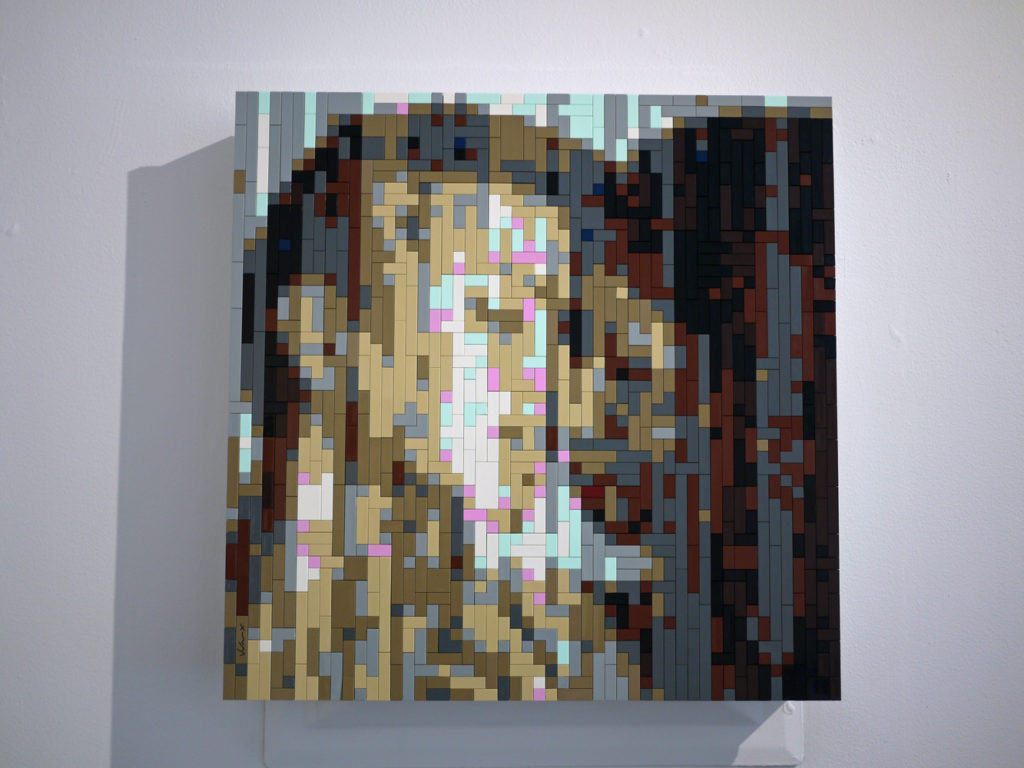
What is the meaning behind the exhibition title Deluxe?
Bri: After seeing what our work looks like together for the first time, I thought we had a surprisingly luxurious look considering that our concepts are deeper than just aesthetics.
Andre: We were talking about the show, maybe 6 months before it was scheduled to open and in our enthusiasm for this collaboration, Bri came out and said it was going to be “Deluxe”. So we said that has to be the title!
Could you each talk a bit about the visual language you’ve developed in terms of your individual artistry and the interplay between these two languages showcased through the exhibition?
Bri: While at school, I developed a love for video editing which has turned out to influence my painting designs. Because video is a time-based medium, imagery and ideas are delivered to the viewer in a certain order. With paintings, all of the visual information is delivered to the viewer at once, but the way in which the viewer will take in that information will vary. This fascinates and compels me to design images with competing qualities, including text, shapes, portraits, and figures. I use text in my paintings to deliver commentary while also utilizing the font’s graphic qualities to distort or contain imagery.
Andre’s and my current work share a special focus on the subjects depicted. My paintings ask the viewer to see the subjects as both an “Art Nude”, which is a traditional subject matter in academic art, and as a naked person who turns the viewer into a voyeur.
Andre: With my Consent works, of which there are several in the show, I’m using the technique of removing more and more layers of information from the works. I do this through pixelation, blurring and the overlaying of lines to images.
Playing on our ideas of gender and how we interpret images, these figures are simultaneously gendered and genderless and reveal in many of us a need to identify gender in what we see. Can we accept everyone for who they identify as, be that male, female or non-binary. Bri’s work complements mine, her direct expression of how we perceive the female nude is the perfect way to emphasize the point we are making together on gender and its perception.
The show focuses on how women are represented in the media and art. What message do you want viewers to take away from your exhibition?
Bri: Images of women in art and advertising are often not about the woman whose image is depicted. The image is of her, but not about her. My work often explores this disconnect and its relationship to society’s view of women. I’d like the viewers to be more conscious of how women’s bodies are being categorized and commodified.
Andre: My anti portrait pieces in the show which reference that women are seen as the bearer of sexuality; the female figures are depicted showing their backs, emphasizing their vulnerability. This position facilitates the voyeur’s objectification and sexualization of the model, I like to quote Laura Mulvey who summed it up succinctly as “woman still tied to her place as bearer of meaning not maker of meaning”. I want my modern-day audience to study the image for cues that justify this treatment. If the viewer sees this, then why is that? Rather, the women can be seen as strong and independent human beings if the viewer is so inclined.
We are living through a “renaissance” for feminist art. Contemporary galleries & museums alike are mounting major retrospectives and unmissable solo shows for female artists. Yet despite the increased recognition, a recent collaborative study conducted by Artnet News & In Other Words showed that female artists represent only 2 percent of the market. What are your thoughts on this?
Bri: Women are not a minority or sub-category in society, we make up half the population. I hope equal attention and appreciation of women’s contributions, skills and ideas are given in my lifetime.
Andre: This does not surprise me in the least as it is still a patriarchal society where men control the money and power and women are still fighting every day for access to that influence. Women are constantly being silenced by men, yet there is no denying that women artists including Bri are making groundbreaking and powerful art right now.
It is so important for the major institutions to recognize women artists, this is one of the steps to making change happen. I remember when I first saw a large Cindy Sherman retrospective (at SFMOMA), it made a real impact on me artistically and personally. These kind of shows do make a difference.
Anything else you’d like to add?
Bri: The nude human form is the foundation of art history. In art, to render a naked figure into an “Art Nude” is to depict the human body as an object. Removing context from visuals allows the artist to focus on portraying the visuals as accurately as possible. But what unintentionally results from intentionally removing the humanity from the image of a nude woman?
In advertising, females have been a common tool to elicit want and desire from the viewer. Their images are used to sell a product or activity that supersedes their importance. Their humanness would be a distraction to the viewer because their purpose is to please, comfort, and entice. Being that advertising is a visually dominating force in society, what conditioned physiological effects do these vacant portrayals of women have on the collective perception of women?
My current body of work focuses on this separation of female humanity from its visual representation.
Andre: Art should be at the forefront of change in society; at its best, it raises important questions and becomes part of the process of change. Not enough men are actively supporting gender equality, in art or in any area of life. Exhibiting with Bri here in New York has produced a powerful juxtaposition of images that provoke a better conversation and I’m so proud of what we have done here.

Quiet Lunch is a grassroot online publication that seeks to promote various aspects of life and culture with a loving, but brute, educational tinge. When we say, “Creative Sustenance Daily,” we mean it.


